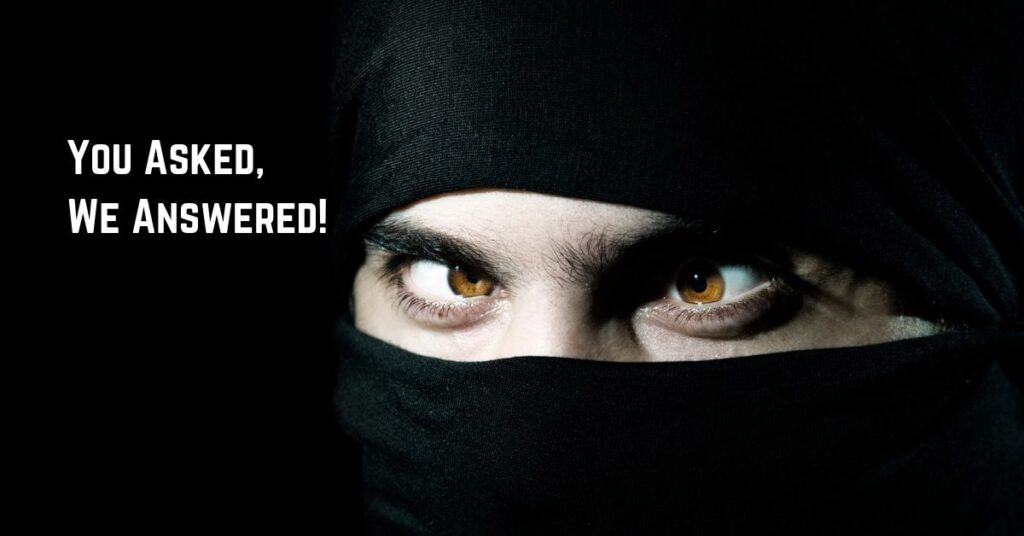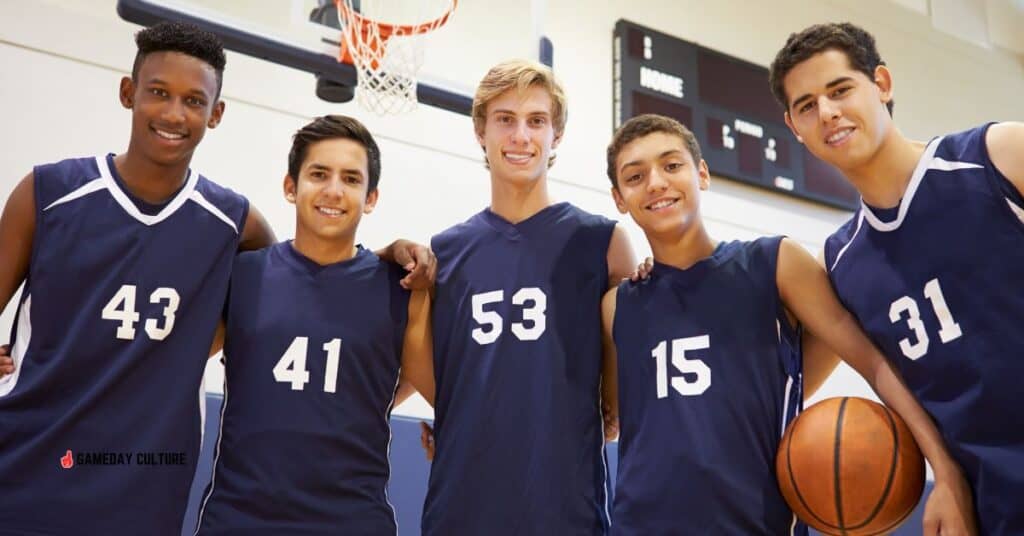Can you wear ninja headbands in high school basketball?
High school basketball has some rules for clothing worn on the court. Are ninja headbands allowed in high school basketball?

No, ninja headbands are not allowed in high school basketball. Part of the reason why they are not allowed is that the types of headbands with “extensions” present a potential safety hazard to players’ hands and eyes. Regular headbands without extensions are allowed.
We’ll explore exactly what a ninja headband is, when the rules disallowed these kinds of headband, and what you are allowed to wear to keep the sweat out of your eyes.
Are Ninja headbands allowed in high school basketball?
No, ninja headbands have been disallowed from most high schools. Let’s go on and explain why high school basketball rules do not allow for the user of ninja style headbands.
What is a ninja style headband?
From the front, ninja style headbands don’t look much different from the headbands typically used to keep sweat out of players’ eyes.
There is a key difference with ninja style headband though. Instead of using a continuous piece of fabric or in some cases silicone, the ninja-style headbands rely on being tied to a player’s head. The result is that a ninja style headband tends to have a “tail” or “extension” that can flop around.
The headbands became popular in the NBA a few years ago. And they certainly offer some flair, considering that they float freely while players are jumping, and they add a little flash to the players’ uniform since they aren’t allowed much control over their appearance besides their shoes – even with some restrictions there.
The NBA decided the following season to not allow the use of the headbands anymore. Next we’ll dig into why
Why was the ninja headband banned from the NBA and high school basketball?
The first element of the NBA you might want to know about is the league approval process. Nearly every change to the NBA from rules to uniforms goes through a process so that the end result represents what the NBA wants. There are some tight restrictions on the use of uniforms, socks, shoes, and more within the NBA which is done partially for safety concerns and to produce the right image for the league.
The NBA believes that the ninja style headband with a tie on the back and potentially with “extensions” is less safe than a traditional headband. The reason for this is that a player could get their fingers caught in the tie, or within the fabric if it has any openings. Another subject was that a player could get hit in the eye by the extensions. The league also claimed that the ties on the back could get tugged and jar a player, causing a fall, which players didn’t readily accept.
Some questioned these statements as the NBA waited until the end of the year to ban the headbands, asking why intervening midseason wasn’t a priority if they presented a real threat. Instead, the NBA decided to wait until the off season to say anything and ban the garment for the upcoming season. Some players began wearing the headbands at the beginning of the year, including Jrule Holiday, Jimmy Butler, Mike Scott, and some others. Their popularity made the issue larger.
What hair control devices are allowed?
An NBA or high school athlete may still wear a circular headband. The difference is that the headband cannot be a tie on headband. While it seems like the issue is relatively rare, an athlete can have only one headband on their head at a time.
There may be color restrictions that go along with team colors – but those are more league and high school based than a national rule.
How did NBA players feel about the ban?
Many NBA players were vocal about the ban on ninja style headbands because they liked them. While they weren’t exactly specific about the headbands being at all more comfortable than typical headbands, they did seem so suggest that the style was something different that many players liked.
Why would high school basketball ban ninja headbands too?
Although the process can take a while, high school sports tends to follow in step with what the NBA and NCAA are doing. Some reasons for this include having players ready to play at a pro level without the need to make uniform adjustments – and also because the NBA tends to be at the forefront of any major changes that need to be in the game.
With that said, rule changes tend to flow down from the NBA versus up from high school, though high school does have some its own rules regarding the shot clock and other issues like that.

Are the safety concerns real?
We believe the safety concerns presented by the NBA are somewhat real – though to a small extent. The chances of a player getting the knot on the back of their head pulled intentionally or intentionally is the same risk as the same thing happening to a player with long hair – the head band tie just increases the chance of injury because other players have more than one thing to grab on to.
Given that the risk of injury in basketball is relatively low compared to other contact sports, we don’t see the risk as being particularly high though. At the same time, the NBA makes some sense since they are trying to prevent injuries to players who are paid millions of dollars for entertainment.
What should I do about ninja style headbands during games?
The coaches, players, and officials are responsible for ensuring that players wear the right gear during games. A coach or official should ask a player to wear the correct kind of headband instead of a ninja headband.
Some day the headbands might go back through the league approval process, but not quite yet.
Key Takeaways
- Ninja headbands in high school basketball are not allowed
- They were banned a few years ago after some NBA players wore them
- The NBA believes the headband can cause a safety issue, including being pulled.
- Players didn’t readily accept the ban and questioned why the league waited for the ban
- Circular headbands are still accepted in games.
